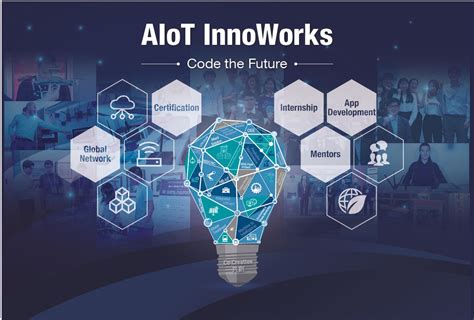Introduction to AIoT and Edge Computing
The rapid growth of the Internet of Things (IoT) has led to an increasing demand for intelligent devices capable of processing data at the edge. This trend, known as AIoT (Artificial Intelligence of Things), combines AI and IoT technologies to enable smart, autonomous devices that can perform complex tasks without relying on cloud connectivity. Edge computing plays a crucial role in AIoT by allowing devices to process data locally, reducing latency and improving privacy and security.
The Rise of AIoT
AIoT is transforming various industries, from smart homes and cities to industrial automation and healthcare. By integrating AI capabilities into IoT devices, AIoT enables:
- Real-time decision making
- Predictive maintenance
- Improved energy efficiency
- Enhanced user experiences
The Importance of Edge Computing in AIoT
Edge computing is essential for AIoT because it:
- Reduces latency by processing data close to the source
- Minimizes bandwidth requirements and cloud storage costs
- Enhances privacy and security by keeping sensitive data local
- Enables devices to operate autonomously, even in low or no connectivity scenarios
Introducing the K210 AI Chip
The K210 is a powerful, low-power AI chip designed specifically for edge computing and AIoT applications. Developed by Canaan, the K210 integrates a dual-core RISC-V processor, a neural network processor (KPU), and a range of peripherals, making it an ideal solution for intelligent edge devices.
Key Features of the K210
- Dual-core RISC-V processor (400MHz)
- Neural network processor (KPU) capable of running CNN and DNN models
- Integrated audio and image processing engines
- Low power consumption (300mW @ 400MHz)
- Rich set of peripherals (I2C, SPI, UART, I2S, etc.)
K210 Development Boards
Several development boards are available for the K210, making it easy for developers to prototype and deploy AIoT applications:
| Board Name | Features | Price |
|---|---|---|
| Maix Bit | Basic K210 board with onboard Wi-Fi and Bluetooth | $12.90 |
| Maix Go | Enhanced K210 board with a camera, mic, LCD, and battery | $23.90 |
| Maix Dock | Expansion board for Maix Bit and Maix Go | $9.90 |
AIoT Applications with the K210
The K210’s powerful AI capabilities and low power consumption make it suitable for a wide range of AIoT applications:
Smart Home and City
- Intelligent security cameras
- Smart doorbells and locks
- Energy management systems
Industrial Automation
- Predictive maintenance
- Quality control and defect detection
- Autonomous robots and drones
Healthcare and Wearables
- Medical imaging and diagnosis
- Fitness trackers and smartwatches
- Elderly monitoring and fall detection
Agriculture and Environmental Monitoring
- Precision farming and crop monitoring
- Weather and air quality sensing
- Wildlife tracking and conservation

Getting Started with K210 Development
To start developing AIoT applications with the K210, you’ll need:
- A K210 development board (e.g., Maix Bit, Maix Go)
- The K210 SDK and toolchain
- A programming language (C, C++, MicroPython)
- An IDE or text editor (e.g., VSCode, PlatformIO)
Setting Up the Development Environment
- Install the K210 toolchain and SDK
- Connect your K210 development board to your computer via USB
- Configure your IDE or text editor for K210 development
- Write and compile your code
- Upload the code to the K210 board and test your application
K210 Programming Resources
Challenges and Future Prospects
While the K210 and AIoT offer numerous opportunities, there are also challenges to address:
Challenges
- Security and privacy concerns
- Interoperability and standardization
- Scalability and management of large AIoT networks
- Skill gap and the need for AIoT education and training
Future Prospects
- Continued growth of AIoT across various industries
- Integration of AIoT with other emerging technologies (5G, blockchain, etc.)
- Development of more powerful and efficient AI chips for edge computing
- Increased adoption of open-source hardware and software in AIoT
Conclusion
The K210 AI chip is a powerful enabler of AIoT and edge computing, allowing developers to create intelligent, autonomous devices that can process data locally and make real-time decisions. As AIoT continues to grow and evolve, the K210 and similar AI chips will play a crucial role in shaping the future of IoT and edge computing.
Frequently Asked Questions (FAQ)
-
What is the difference between AIoT and traditional IoT?
AIoT integrates artificial intelligence capabilities into IoT devices, enabling them to process data locally and make intelligent decisions without relying on cloud connectivity. Traditional IoT focuses on connecting devices to the internet for data collection and remote control. -
Can the K210 run popular AI frameworks like TensorFlow or PyTorch?
The K210 does not directly support TensorFlow or PyTorch. However, you can use tools like nncase to convert trained models from these frameworks into a format compatible with the K210’s KPU (Neural Network Processor). -
What programming languages can be used to develop applications for the K210?
The K210 supports development in C, C++, and MicroPython. You can use the K210 SDK for C/C++ development and Maix Python IDE for MicroPython development. -
How does the K210 compare to other AI chips like the Raspberry Pi or Nvidia Jetson Nano?
The K210 is specifically designed for low-power edge computing and AI applications, with a focus on audio and image processing. It consumes less power than the Raspberry Pi and Jetson Nano, making it suitable for battery-powered devices. However, the Raspberry Pi and Jetson Nano offer more flexibility and support for a wider range of AI frameworks and applications. -
What are some real-world examples of AIoT applications using the K210?
Some examples of AIoT applications using the K210 include: - Smart door locks that use facial recognition for access control
- Industrial quality control systems that detect defects in real-time
- Wearable devices that monitor health metrics and detect falls in elderly patients
- Agricultural drones that use computer vision to monitor crop health and optimize irrigation

No responses yet